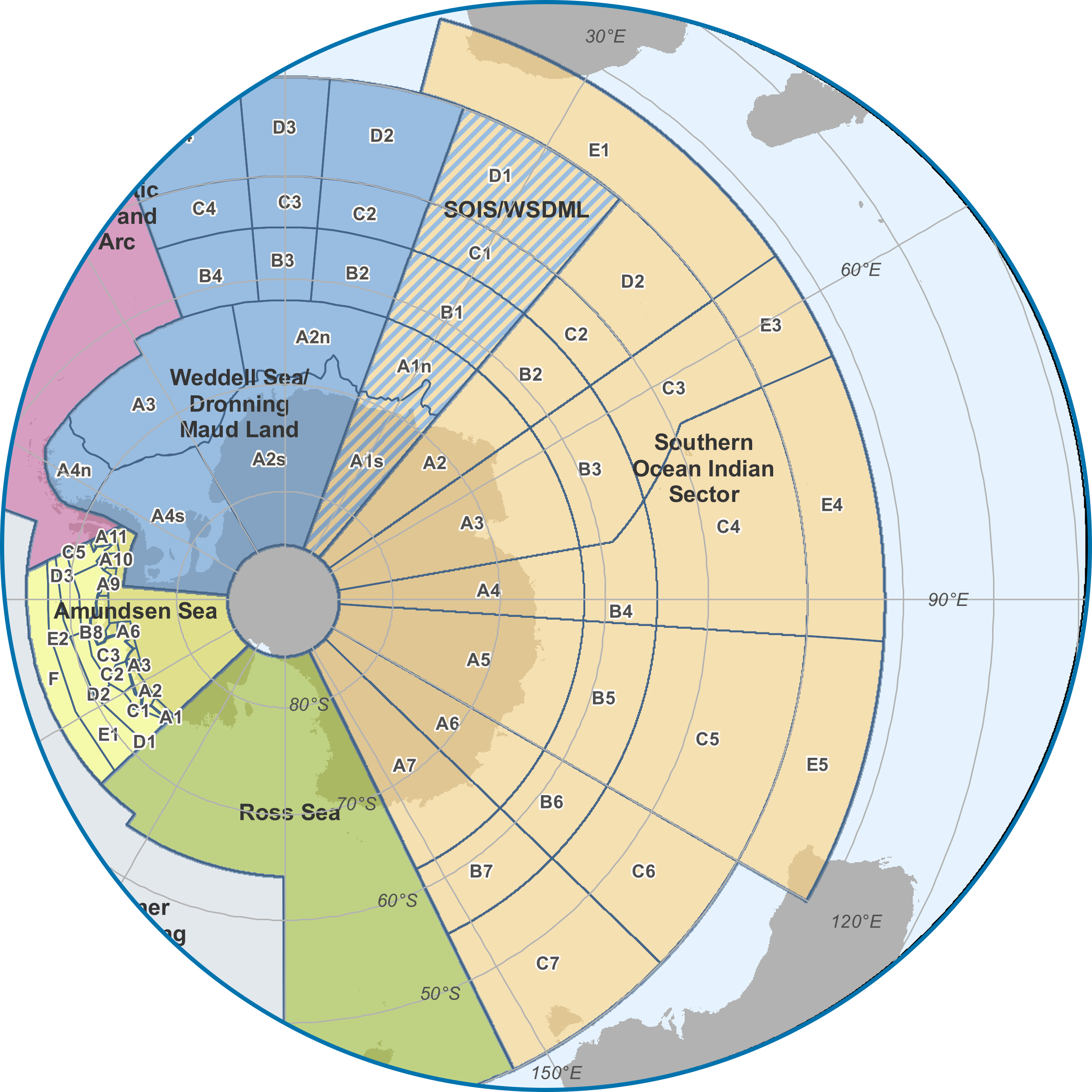Southern Ocean Indian Sector (SOIS)
Regional Working Group

The Southern Ocean Indian Sector (SOIS) region is important for AABW formation (Cape Darnley, Adélie Land) and hosts economically significant fisheries (toothfish and icefish, and a likely expansion of the krill fishery). This region is characterised by high biological productivity from natural iron fertilisation and frontal dynamics near the Crozet and Kerguelen Islands, and significant mass loss from the East Antarctic Ice Sheet. Observing efforts are focused on: primary productivity, carbon export and biodiversity, monitoring of zooplankton, fish, seabirds, seals and whales, and quantifying changing inventories of heat and carbon. This is achieved using ships, moorings, profiling floats, animal-borne sensors and satellites.
The Southern Ocean Indian Sector Regional Working Group will assist delivery of coordinated and, where possible, long-term standardised observations of essential physical, chemical and biological variables in the Southern Ocean's Indian Sector (SOIS) in support of the Southern Ocean Observing System.
The working group is open for involvement to anyone working in the Southern Ocean Indian sector. Click the button below to receive updates and further relevant information about the SOOS SOIS Regional Working Group.

-
Develop and enable regional-scale observing encompassing the six themes of SOOS in the SOIS using SOOS best practice for the observing system.
-
Identify and assemble legacy data sets and sampling techniques of ships and stations in the SOIS in order to provide best practice sampling protocols for parameters to enable their standardization, which may include adoption of standards from other international programs. Sampling approaches and recommendations will be made available on the SOOS Web site.
-
Based on the experience in the SOIS, identify gaps and bottlenecks in the observation systems and contribute to SOOS in addressing these issues. Facilitate co-ordinated observations between different nations in the region and, where possible, facilitate coordinated multi-disciplinary (physical, chemical and biological) observations. Plans, operations and meta-data will be made available on the SOOS web site to help collaboration amongst the international community.
-
Facilitate and, when needed, develop procedures to achieve efficient sharing of data across the science community according to SOOS data policy.
-
Convene focussed sessions at national and international meetings, including SCAR and SCOR, and facilitate synthesis products, to increase the awareness of the science community to the importance of the SOIS.
-
Provide support to International Program Office (IPO) by providing annual reports to be available at the SOOS SSC annual meeting, as well as providing content for the IPO website/newsletters on the activities and outcomes of the Indian Sector Working Group.
-
Develop a funding plan to sustain the Working Group activities.
-
Have products coming out of the WG acknowledge SOOS.
-
Contribute to and liaise, as practical, with international initiatives relevant to assessing the state of the SO and its interrelationships with neighbouring oceans and the globe more generally.






